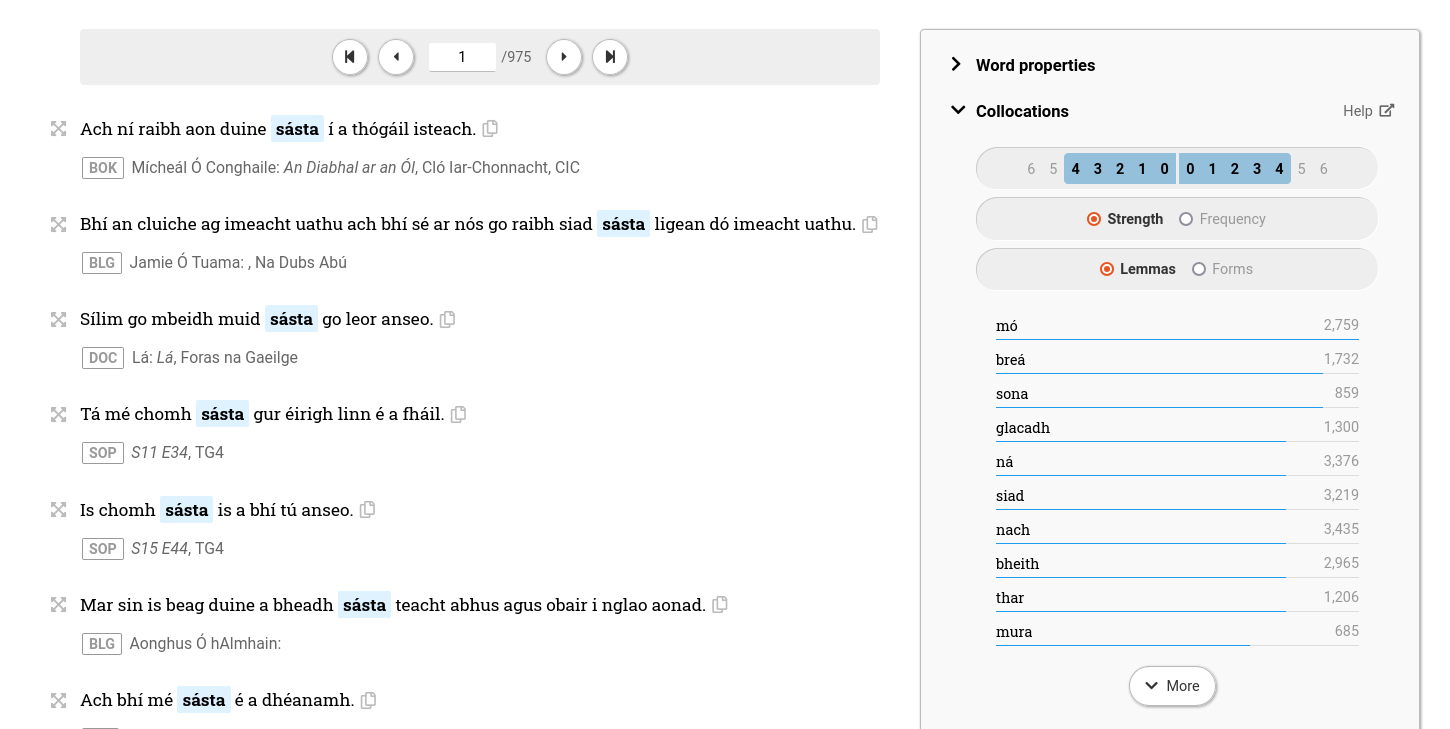Collocations
When two words happen to stand close to each other often in the language, that is said to be a collocation.
EXAMPLES
Verbs and their prepositions. Wherever you see the verb
abair, you often see the prepositionlenear it.Nouns and their verbs. Whereever you see the noun
ceist, you often see verbs such ascuir,freagairand so on close by.Frozen phrases. When we see the adjective
mórin the text, there is a considerable probability that the wordsle ráwill follow , because mór le rá is a common phrase.
Finding out about the collocations of the word
A section titled Collocations is available in the gray panel on the right-hand side of the search results page. There you can see which words are often next to the word you searched for.

This information is extracted from a certain "window" of words before and after it. You can change the width of that window (that is, the number of words before and after it).
The list can be changed between list of lemmas and list of forms. If you are unsure of the difference between a word form and a lemma, read the article Words, lemmas and tags.
Clicking on any of the collocations will narrow the list down to results that contain the collocation.
Collocation strength
The list of collocations can be ordered according to two criteria: strength and frequency.
-
Strength: This tells how "strong" the collocation is. The strength of a collocation is calculated with an algorithm that takes into account two things: (1) how often the words occur together in the corpus, and (2) how common each of those words is in the corpus regardless of the other word.
-
Frequency: This tells how often these two words occur together in the corpus and does not take anything else inti consiedration. This gives priority to words that are very common in the language as a whole even if they have no particular relation to the other word, for example the article an.
Most of the time, the first one, strength, will give you more useful insights, because it filters out the most common words in the language.